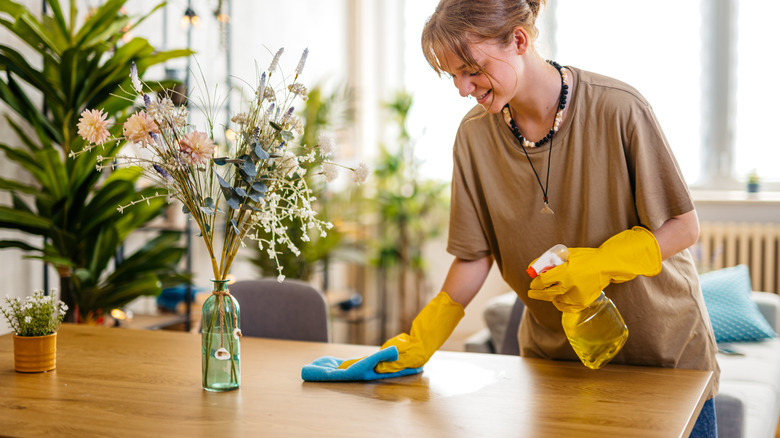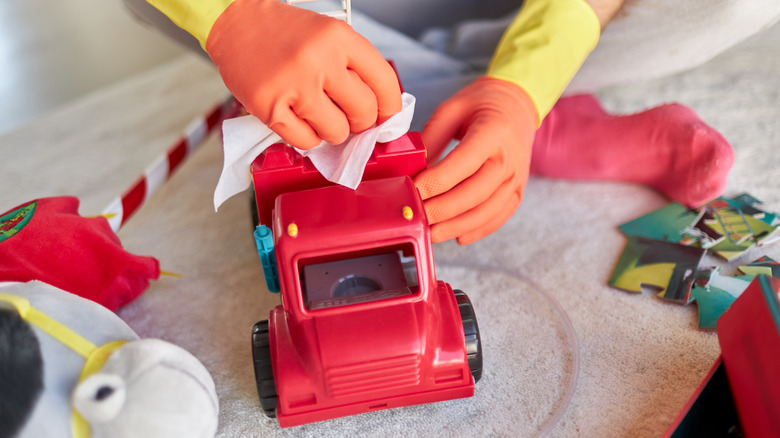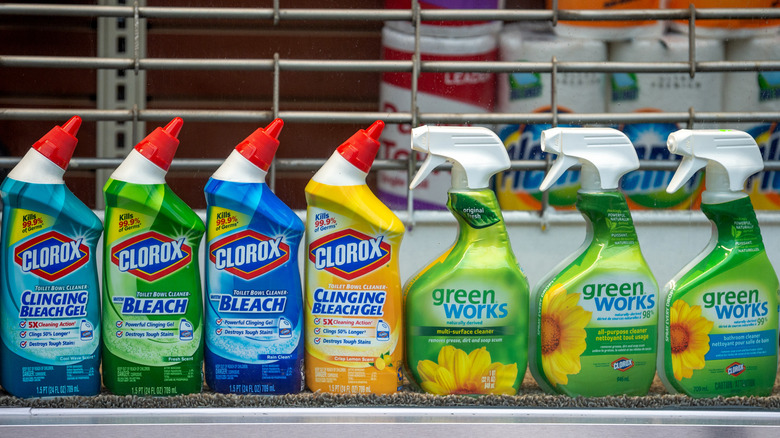Our Cleaning Expert Explains The Main Difference Between Sanitizing And Disinfecting
Good hygiene practices like keeping the house clean and wearing clean clothes help prevent illness and maintain good health. This is why, with any type of cleaning, the goal is to remove dirt and germs to make things clean and safe. In the process of removing germs, the terms sanitizing and disinfecting come up often and are commonly used interchangeably but actually shouldn't be. Katie Dills, Brand President of The Cleaning Authority, spoke exclusively with House Digest on the difference between the two and when each is needed. "Sanitizing reduces the presence of germs and bacteria on surfaces, while disinfecting eliminates them," she said.
"Disinfectants are usually harsher cleaning solutions and are more commonly used in high-traffic areas of the home after bouts of illness. Sanitizers are used more on day-to-day objects/toys and kitchen countertops." When doing laundry, for example, the big difference between sanitizing and disinfecting is that disinfecting is better for washing the clothes of someone who has the flu while sanitizing is good for anything that's just really dirty like gym wear.
Sanitizing vs Disinfecting
In her exclusive interview with House Digest, Dills dove into the two concepts and the types of surfaces that each is better suited for. "Sanitizing is best suited for areas or items that have been lightly used, are in close proximity to food, or can be thoroughly cleaned without the use of strong chemicals. Some examples are kitchen counters and appliances, children's toys, TV remotes, etc. You should regularly sanitize certain areas and items around the home to avoid the buildup of germs and help keep others around you healthy."
"On the other hand, disinfecting is reserved for areas or items that are high use, come in contact with bodily fluid, or have been used by anyone that's recently been sick. Some examples are doorknobs, faucets, toilets, etc.," said Dills. Beyond the home's interior, gardening tools are another category of things that need to be disinfected so they don't carry and spread germs from plant to plant.
The more you know
Something else to note is that using a disinfectant requires more caution than a sanitizer. "Because you are using a more powerful cleaning solution when disinfecting, you want to be mindful of what and where you are disinfecting to avoid any overexposure." This is why bleach and hydrogen peroxide, two common disinfectants, need to be handled very carefully.
Dills provided some advice to House Digest readers on what to look out for when buying these products. "Whether you're purchasing a sanitizing or disinfecting product, it's important to read the labels and instructions so you're not damaging any surface areas or materials you intend to clean. Some solutions may be damaging if used excessively or not wiped down properly, so be sure to thoroughly clean and wipe down the areas being treated." The label on the cleaning bottle will also tell you things like what germs it tackles and how long to leave the product on.


